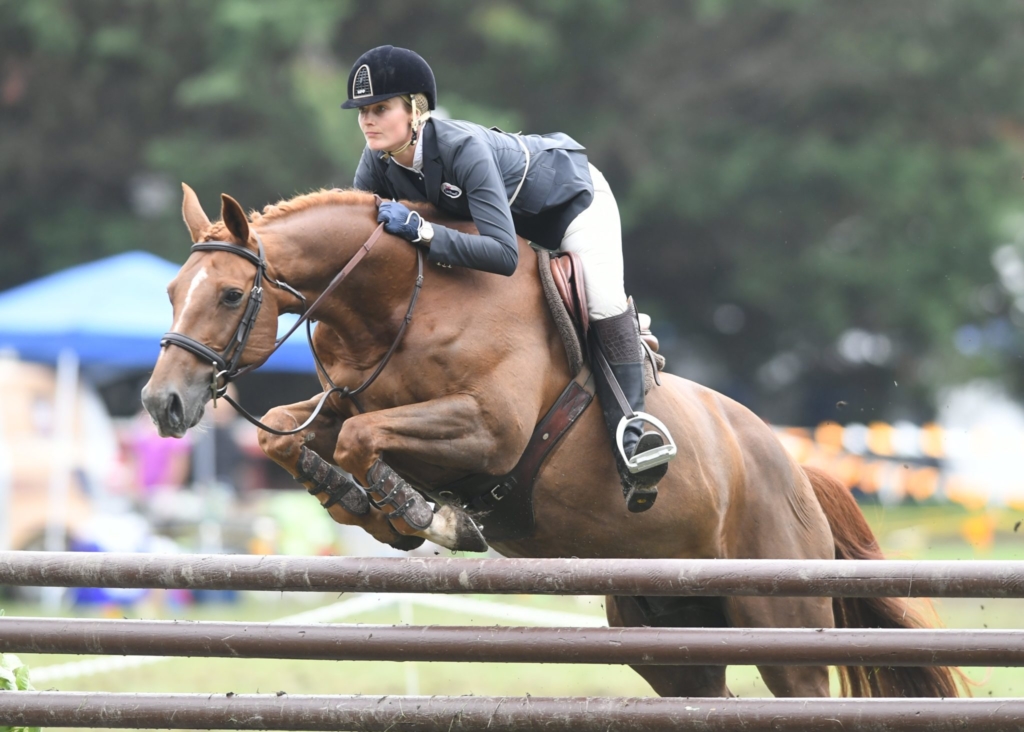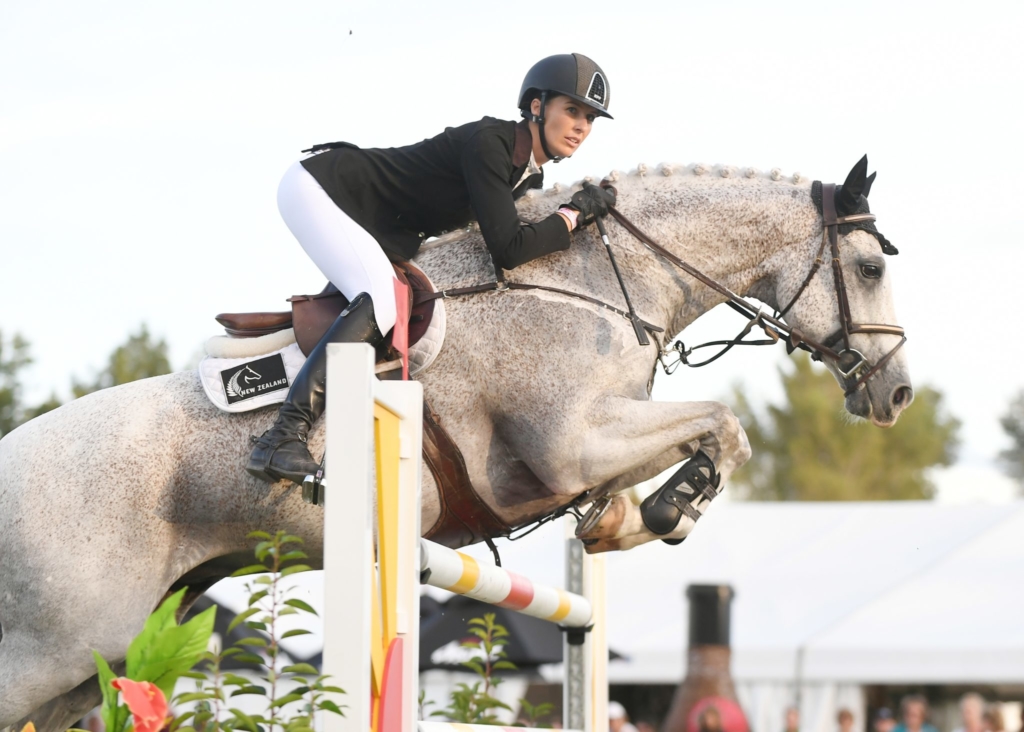By Rebecca Harper
Show hunter can help lay the foundation for success in the jumping arena, with many of the country’s top showjumpers getting a grounding in the hunter ring.
Current ESNZ Jumping squad members Lily Tootill, Melody Matheson and Emily Hayward all won Horse of the Year titles in the show hunter section while on ponies. World Cup rider and Senior New Zealand team member at the recent HOY show, Tess Clark, and the classy Double O Eight, who lends his name to the Show Hunter of the Year trophy donated by the the Vallance family who owned Distelfink, the sire of Double O Eight. Tess and Double O Eight won that title three times and also competed very successfully in showjumping.
Tess, who is an equine massage therapist, did many years of showhunter as a child and into her teens. “I had a very special horse, Double O Eight, who we bought off Sarah Milne when he was six years old. He won many national showhunter titles. He won the Showhunter of the Year three times and the Junior Showhunter of the Year a couple of times too.”
Not only did he excel in the hunter ring, he was third in the national seven-year-old showjumping championships at the young horse show and the seven-year-old HOY class.
“Double O Eight was beautifully schooled by Sarah when we bought him, which taught me how a properly schooled horse should feel. He was fantastic in both the showjumping and show hunter ring,” Tess says.
“He was a very scopey horse who would have gone to the top if he hadn’t of broken his pedal bone in a paddock accident as an eight-year-old. Probably one of the most gut wrenching events that has happened in my showjumping career.”
Tess says there are benefits for both horse and rider in the show hunter ring. “I think it teaches riders to ride smooth and balanced. It also teaches riders the importance of striding and how to see a distance. Show hunter for young horses helps create an even and balanced stride and gives the horse confidence jumping a course.
“Show hunter has helped shape my riding by teaching me to ride smoothly and to not interfere with the horse. In the show Hunter ring you have to look the part and ride stylishly. Your horse must be schooled and quiet enough to canter around effortlessly and jump in a nice frame.”
Opiki’s Chloe Hansen, who has been the one to beat in the show hunter ring for many years, has proven that the two disciplines can complement each other and skills learned in the hunter ring can be carried into the showjumping ring.
Her top mount Kiwi Motto, or Harty as he is known, has six Show Hunter Horse of the Year titles to his name. This season the pair have also had Grand Prix success. “Harty is 16 now, this is the first season he hasn’t done any show hunters, I wanted to make the most of jumping the bigger classes on him, he jumps best when he’s fresh. I’ve had him 11 years and this would be the first year he hasn’t done the show hunter title class.”
She believes the hunter ring is great for building confidence and gives young horses the opportunity to see fill, which can be lacking in the lower heights for showjumping.
“For young horses, the distances are set up, the lines are set up perfectly for them and it’s good for them to see the fillers. The courses are nice and flowing and the jumps are easy to get to,” she says.
“I think the rhythm is the most important thing, you can take that into the showjumping ring, to maintain that even stride length the whole way to the jump.”
Chloe says people underestimate how hard it is to nail a Show Hunter round. “I get more nervous before a Show Hunter round than a Grand Prix, because it has to be perfect. Any adjustment you make has to be invisible, which is the hardest part. The more you do it, the more you realise how hard it is to get the perfect round.
“You can often tell the difference in those riders who started in show hunter, they ride a lot smoother and are a bit more polished, I would say.”
Fulltime showjumping rider and trainer, Lucy Olphert, is a big believer in the benefits of show hunter, for both horse and rider.
Better known these days for her feats in the showjumping arena at World Cup level with her top mount Eve Saint Laurent, Tauranga-based Lucy started off in the show hunter ring.
“Show hunter and flat classes were the first things I did at HOY, before I ever competed in showjumping. I’ve done it ever since I was on ponies and have been runner-up in the main horse title class, which was the pinnacle of my show hunter career.”
She believes it is a great foundation for horse and rider, and especially for young horses. “I think it’s an awesome foundation and stepping stone to work in an environment with good tracks, good striding and gentle related distances.”
For the rider, it helps encourage good placement and position to the jump.
“The core of my training philosophy is based on striding, balance, rhythm, adjustability and position. Show hunter encourages you to think about all of that.
“You really have to have that foundation for showjumping otherwise the cracks will start to show later on.”
She points out that in Germany, their system allows four, five and six-year-old horses to compete only in style classes. “It’s not really any different to show hunter because you’re being judged on style, the way the horse goes around the course, the form, technique and nice rhythm…when the horses get to seven and older they have been produced so well, they can step up and jump the bigger classes and not only perform, but be rideable.
“As a coach, one of the things I see riders, young and old, struggle with the most is lack of foundations and lack of understanding of striding. Once you start moving up the heights the room for error is less, and I think that’s what separates the good riders from the really successful riders.”

